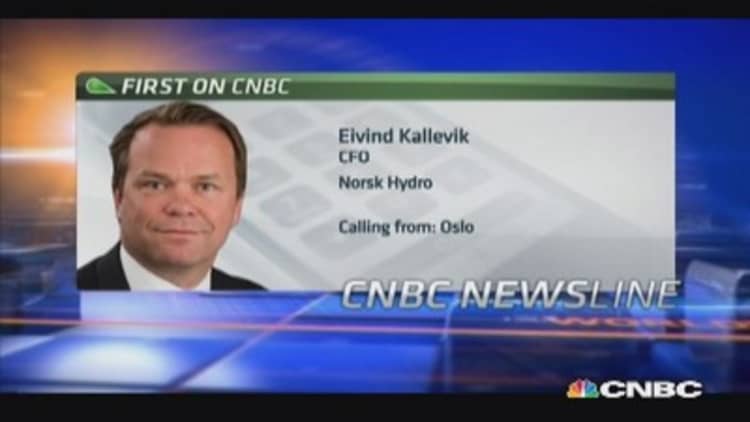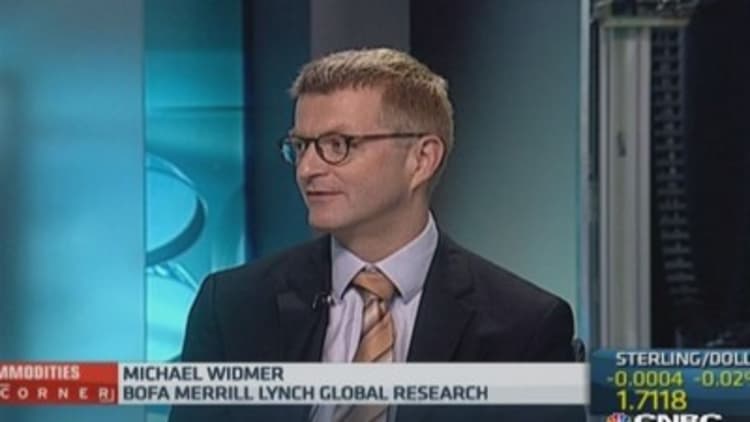As sentiment turns increasingly bullish towards aluminum amid a backdrop of tight supply, analysts say the once-shunned base metal is finally at a turning point.
The metal has been trading near seventeen-month highs above $2,000 per ton in recent weeks and entered a bull market in late July, up more than 20 percent since a 2014 low of $1,677 in February.
"We're probably now at a point where the aluminum market may be turning and that has everything to do with supply shutting down in China and as supply-demand re-balances across the entire industry," Gaurav Sodhi, resources analyst at Intelligent Investor, told CNBC on Thursday.
Read MoreThis country may spark next commodity supercycle
"Over the last five or eight years, China has massively increased its supply of aluminum and that's depressed prices across the sector. But that's changing a little a now. As China focuses on energy-intensive activities, they are changing the economic mix of production and that's forcing a lot of aluminum production to be shut down," Sodhi continued.
Smelter closures in China, the world's leading aluminum producing country, resulted in a two million ton capacity decline from the end of 2013 to May this year. That saw global daily average output fall by 500 tons in June from May, according to the International Aluminum Institute. Meanwhile, Rusal, the world's largest aluminum producer, said its first-quarter production declined by over 2 percent.

J.P. Morgan predicts an aluminum deficit of 439,000 metric tons this year, compared with a surplus of over 2 million tons during the financial crisis. In 2015, analysts surveyed by Reuters expect the deficit to increase to 444,000 tons.
Read MoreHow aluminum became a cash cow for Goldman
"Aluminum requires an enormous amount of energy and a lot of that energy has been subsidized in China. Those subsides are coming off, producers are facing higher prices and in response to that, they are starting to cut back a little bit so it's the supply-side that's really driving the recovery here," Sodhi said.
Year-to-date, aluminum is one of the top performing base metals with gains exceeding 12 percent, compared with copper's 5 percent decline and lead's 1 percent rise.
Other factors
In a further boost to sentiment, Alcoa recently said its primary metals business returned to a profit in the second quarter and Rio Tinto announced an annual 74 percent rise in first-half aluminum earnings.
Read MoreAlcoa CEO seeing biggest trade shift in '125 years'
Indonesia's ban on bauxite ore earlier this year is also underpinning prices as the mineral is crucial for creating alumina, which is then refined into aluminum. The country accounts for nearly 60 percent of global bauxite exports.

What's next?
So, is the rally here to stay? Not exactly, according to UBS. The firm was bullish on aluminum since the start of 2014 but five weeks ago turned cautious on expectations of a supply pick-up during the second-half.
Read MoreGartman: If you buy anything, buy this
"We can't just look at LME prices, we need to look at physical premium prices as well, which are trading around $2,400 per ton and at such levels you'll see activity picking up in terms of production value," said Dominic Schneider, head of commodity research at UBS , in a phone interview.
"People need to be aware that the curve has flattened a fair bit. Over time, that will improve supply availability from the exchanges. In addition, getting metal out of exchanges takes a long time, in some cases 600 days, and that availability will gradually seep into the market," he added.
UBS predicts a deficit for 2014, but notes that it will be small at around 200,000 tons.
Read MoreWhat the F-150 tellsus about the aluminum industry
"The story for the long investor is over, the rally is mostly behind us," Schneider said.

